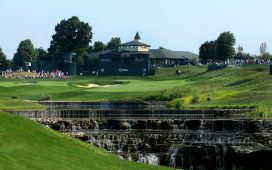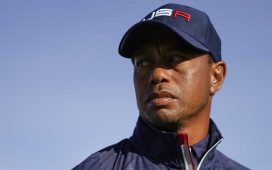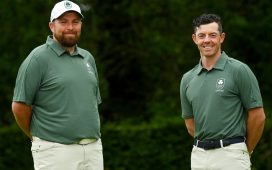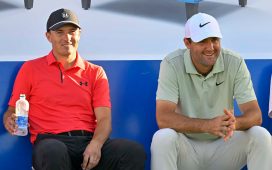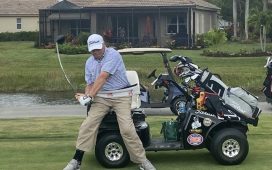Back when I was playing college golf for the Lady Blue Devils at Duke University, I often heard other student athletes comment that “golf is not a sport, it’s an activity.” This infuriated me because my teammates and I worked as hard in the gym as we did honing our skills on the practice range and golf course.
Many years later, thanks to players like Annika Sorenstam, Tiger Woods, Brooks Koepka, Rory McIlroy, Dustin Johnson, and many others, that attitude has changed, and there is now much more appreciation for the athleticism of golfers.
Before my teaching career began, I researched the importance of flexibility and strength training for the senior golfer, and I even completed my master’s degree thesis on this topic. My research found that with a consistent workout regimen, flexibility and strength can improve — even after the age of 72. Strength training and flexibility exercises not only condition an athlete’s muscles to withstand the repetitive golf swing, they also decrease the chances of injury to the muscles and joints.
When I started working as a golf instructor, I realized that to help students become better golfers, I needed to take a holistic approach to my teaching. That is, not only did I need to help them correct swing faults, I also needed to help them address the physical limitations that were the underlying cause of those faults. And for truly dramatic improvement, I also needed to enlist the skills of fitness and other professionals.
One of the most dramatic improvements I’ve witnessed with this approach is with a 64-year-old male student, who lowered his handicap index from 13 to 4 in a relatively short amount of time. When I first started working with this student, he had a major swing flaw: his right hip bumped out laterally, and as a result, his upper body leaned forward or left, creating a reverse spine angle. His swing path on the downswing was steep and over the top.

To correct this flaw from an instruction standpoint, I worked with my student to initiate his back swing by turning, not bumping his right hip. I also worked with him on creating some space and making sure he rotated his upper body back. One of the most effective drills I had him perform and still come back to is the Pump Drill, in which the student takes the club back normally, and then on the downswing, the arms lower so the right elbow (for a right-handed golfer) maintains a 90-degree angle and touches the right oblique muscle before raising up to the top of the swing again. So from the top, the arms “pump” down and up a couple of times before completing the swing through the ball. This drill really helped him focus on his right hip and torso rotation and position, and doing this drill has allowed him to stay more centered with his irons and effectively “cover” the ball through impact. With his driver, he is able to feel his torso behind the ball and as a result create a better swing path and swing “up” on the ball.
Then it was time to incorporate some holistic solutions. From a physical limitation standpoint, I determined that the underlying cause of my student’s reverse spine angle was a lack of hip and thoracic spine mobility. To address these limitations, concurrent with my instruction, my student and I worked with a world-class golf athletic trainer to improve his overall strength, a master Pilates instructor to work on core strength, flexibility and mobility, and a nutritionist to improve his diet to fuel the physical changes that he needed to make. I also had him work with a U.S. Naval Academy instructor to learn to swim, as I have found swimming helps with cross-pattern movement.
